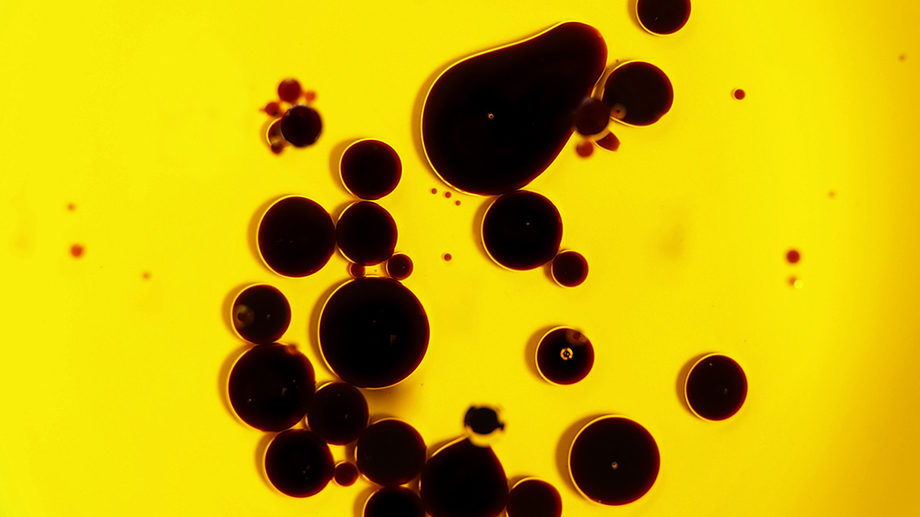When a cell divides, its constituents are usually evenly distributed among the daughter cells. UZH researchers have now identified an enzyme that guarantees that cell constituents that are concentrated in organelles without a membrane are properly distributed. Their discovery opens up new opportunities for the treatment of cancer, neurodegenerative diseases, aging processes and viral infections.

© iStock/zimmytwsVinegar drops in olive oil illustrate the phase separation of two liquids.
As every cook has experienced: When balsamic vinegar and olive oil are mixed, both liquids separate. Round vinegar drops form, which then float on the surface of the oil. In physical terms, this constitutes the formation of two phases in the liquid. Phase separation of molecules also takes place inside cells. Here, liquid drops form in the cell plasma.
Phase separation guarantees distribution of cell componentsResearchers at the laboratory of Lucas Pelkmans, professor at the Institute of Molecular Life Sciences at the University of Zurich (UZH), have now discovered that a class of enzymes - which are dual specificity kinases - actively control this process in cells. When a cell divides, the enzyme DYRK3 promotes the mixing of the phases. This guarantees that the cells can correctly build the machinery for separating the chromosomes and dividing the cell content. After division, the enzyme is broken down and the individual phases start to form again. If everything goes according to plan, the genetic material, organelles and cell contents are correctly distributed among the daughter cells. "These fundamental findings give us completely new insights into cell division: as a process in which the cell contents mix together and then separate again," says Lucas Pelkmans.

Comment: See also: